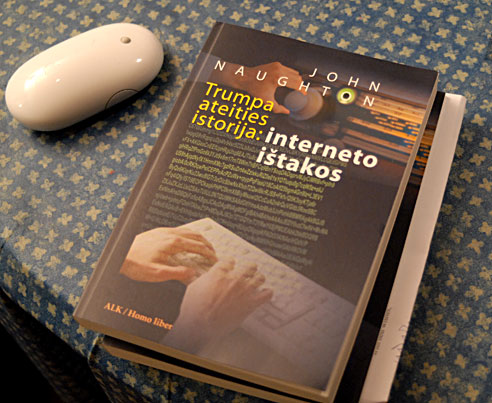Interesting essay by Doc Searls on citizen journalism, user-generated content and related topics. It concludes:
The Net is a giant zero. It puts everybody zero distance from everybody and everything else. And it supports publishing and broadcasting at costs that round to zero as well.
It is essential for the mainstream media to understand that the larger information ecosystem is one that grows wild on the Net and supports everybody who wants to inform anybody else. It no longer grows inside the mainstream media’s walled gardens. Those gardens will continue to thrive only to the degree that they do two things: 1) open up; and 2) live symbiotically with individuals outside who want to work together for common purposes.
Framing is a huge issue here. We have readers and viewers, not just “audiences” and “consumers”. We write articles and essays and posts, not just “generate content”. “User-generated content”, or UGC, is an ugly, insulting and misleading label.
“Content” is inert. It isn’t alive. It doesn’t grow, or catch fire, or go viral. Ideas and insights do that. Interesting facts do that. “Audiences” are passive. They sit still, clap and leave. That might be what happened with newspapers and radio and TV in the old MSM-controlled world, but it’s not what happens on The Giant Zero. It’s not what happens with blogging, or with citizen journalism. Here it’s all about contribution, participation. It involves conversation, but it goes beyond that into relationship — with readers, with viewers, with the larger ecosystem by which we all inform each other.
As I’ve said before (and I said it again at the conference), we don’t just “deliver information” like it’s a Fedex package. We inform each other. That is, we literally form what other people know. If you tell me something I didn’t know before, I’m changed by that. I am not merely in receipt of a box of facts. I am enlarged by knowing more than I did before. Enlarging each other is the deepest calling of journalism, whether it’s done by bloggers, anchors or editors.
We are all authors of each other. What we call authority is the right we give others to author us, to make us who we are. That right is one we no longer give only to our newspapers, our magazines, our TV and radio stations. We give it to anybody who helps us learn and understand What’s Going On in the world. In that world the number of amateur informants goes up while the number of editors on newspaper staffs goes down. Between these two facts are many opportunities for symbiosis.
“Curation” and “curative” are words tradition-bound journalists like to use when they defend their institutions. [Editorial note: this is a reference to the NYT Publisher’s statement that “”We are curators, curators of news. People don’t click onto the New York Times to read blogs. They want reliable news that they can trust.”] But these are museum words. They suggest collections of artifacts behind locked doors in basement collections. The New York Times may have a financial success with Times Select, its online paper. But Time Select is a walled garden with a locked gate. You can’t look up anything there in Google, because its “conent” is trapped behind a paywall. Only subscribers can see it, and there’s a limit on how much archival material they can see without paying more.
The majority of papers today still lock up their archives. It’s time to stop that, for the simple reason that it insults the nature of the Giant Zero environment on which they now reside. They can make as much or more money by exposing those archives to Google’s and Yahoo’s indexing spiders, by placing advertising on them, by linking to them and bringing interest and visitors to them, by making them useful to other journalists (many of whom will be bloggers) seeking to write authoritatively about their communities and their communities’ histories.
Established media institutions have enormous advantages. But they can’t use them if they continue to live in denial of the nature of their new world — and of the interests, talents and natural independence of the other inhabitants there.





